This was published 7 years ago
Kakadu rock art: Where art leaps out at you
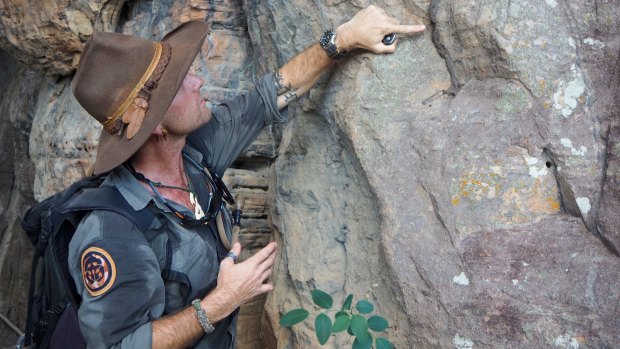
Parks Australia guide Christian Diddams.Credit: Nina Karnikowski
The clouds of smoke waft over our bodies as the didgeridoo hums its mournful song. Two men from the Bininj tribe, the traditional owners of the land we stand on here in the Jabiru region of Kakadu National Park, sing to the music they're creating, while the woman sitting cross-legged on the ground shifts the still-green leaves on top of the fire to waft more smoke our way.
This song is our 'welcome to country', an apt reception into a part of Australia where art jumps out at you from the most unexpected of places. The music is also our protection says one of the singers, a young man named Selone Djandjomerr, who will also be our guide as we head out into this wild country. "When we go out now, if we're not doing the smoking ceremony, something bad might happen," he says quietly as he ushers us over to our van.
Kakadu holds the largest protected collection of rock art in the world, with more than 5000 registered art sites holding artworks up to 20,000 years old, and an hour later we get to see one of them for ourselves. Sweating profusely, we hike through the scrub at Bardedjilidji art site, passing yellow and ochre streaked sandstone stacks, some of the oldest in the world believed to have once been islands during prehistoric times.
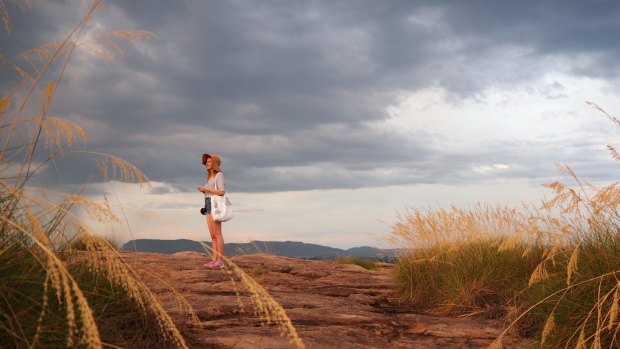
UbirrCredit: Nina Karnikowski
We trail Djandjomerr and our Parks Australia guide Christian Diddams, a passionate eco-warrior with thick wooden earrings pushed through both earlobes and matching tribal tattoos on his arms. Diddams stops under an overhang and points up to an ominous-looking ochre depiction of what looks to be a giant with long spindly fingers reaching down to grab the smaller figures below. "This is a 'namande', which roughly translates to 'malevolent environmental spirit'," says Diddams. "They have the big hands because they tend to getcha, put that sickness into ya."
Us Balanda (non-Aboriginal people, as Diddams refers to us) laugh, but Djandjomerr is quick to remind us that bad spirits are no joke for Bininj. "This morning, the smoking ceremony was to keep that kind of bad spirit away. They might get one of you. Next thing you know bad sick, bad headache, bad things might happen."
Whether it's the spirits or the dead 42-degree heat, I feel a headache coming on as we continue walking through the dry grasses. I'm relieved when we stop under the shade of some nearby Eucalypts. There Djandjomerr points to the elegant outlines of Barramundi etched into the rock, their bones criss-crossed over their bodies in "X-ray style", that are estimated to be 2000 years old.
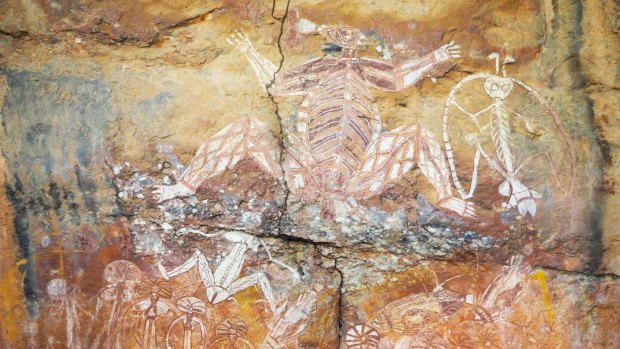
Nourlangie, Lightning ManCredit: Nina Karnikowski
"When us Bininj see rock art painting like turtle or fish or kangaroo, it means it's a good hunting place here," says Djandjomerr. And as we continue on our way, passing small freshwater swamps and billabongs surrounded by more of those majestic sandstone formations, we can certainly imagine it once was.
A short drive away, past the regenerative fires that crackle away during the dry season and the metres-high gloopy termite mounds, is Ubirr (pronounced oo-beer), one of the most famous art sites in the Kakadu region. Diddams ushers us into the main gallery, housed under another sandstone overhang, and a collective gasp goes up as we take in walls smothered with ochre, orange, yellow and white x-ray style images of turtles, fish and kangaroos. Everywhere we look on the giant rock canvas there's more, but Diddams tells us we're only seeing a fraction of what's really there since the paintings are layer upon layer. "For Bininj, the action of painting is more important than what's painted, so lots of older paintings are covered with younger ones. It's the process, and the law that's learnt through that process, that's important," he says.
The shadows start to lengthen and we make our way up a rocky track to a mural incorporating two long, thin female ochre figures, the Namarrgarn sisters, who Diddams tells us turn themselves into crocodiles to terrorise and attack locals. A depiction of the local law and a lesson for children thousands of years ago; in effect the area's very first crocodile warning sign.
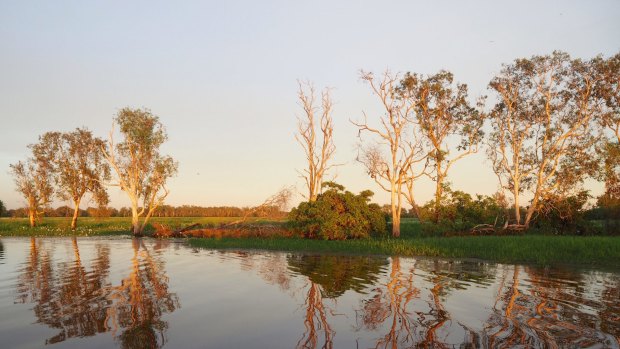
Sunrise in Kakadu.Credit: Nina Karnikowski
We continue climbing the track up to the Nabad Lookout, where we get spectacular 360-degree views out over the vast floodplains as the sky turns tangerine, fuchsia and lemon. It's a spectacular tropical sunset to be sure, one that often draws hundreds of people a day to this very place to see it. But later that night, as I lay in bed, it's the images of those stark, elemental figures that stay in my mind.
The next morning, we try our hands at creating some of them ourselves. In the sprawling lobby of the Crocodile Hotel we sit with Djandjomerr, who is also the hotel's 'artist in residence', for an art lesson. Mini canvases in hand, Djandjomerr instructs us to first paint the block-coloured background with a large brush, the outline of our figure with a smaller brush, then fill in the x-ray style details with a tiny brush crafted from the whittled head of a reed. It is much, much harder than Djandjomerr makes it look. My hand trembles, the thin lines come out wobbly and awkwardly spaced.
Exploring Nourlangie art site later in the day, I feel a more intense respect for the ancient artists, knowing the skill and patience they must have had to create these seemingly simple works. The respect is especially deep when we come across a powerful, detailed white and ochre figure done in x-ray style with a fish for a head. This is Namarrgon, or Lightning Man, says Diddams, who in Dreamtime stories is the source of the fierce tropical storms in Western Arnhemland during the monsoonal wet season. He's completely enchanting and we feel compelled to stay and stare at him a while. We take a seat on a nearby bench and fall into quiet conversation about Namarrgon and about how, while we'd come to Kakadu expecting natural beauty, we never expected the cultural heritage we've encountered here to be quite so rich.
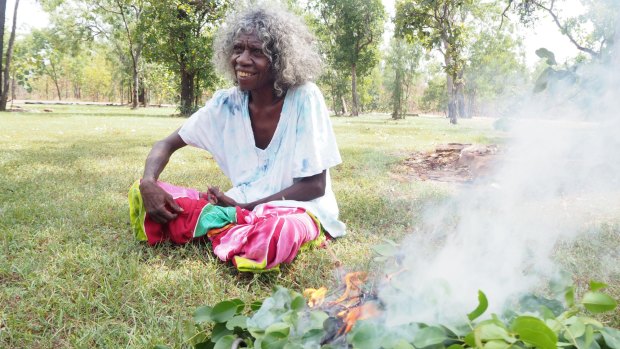
Bininj smoking ceremony.Credit: Nina Karnikowski
"Yeah," says Diddams with a knowing smile. "There's waterfalls and all that, but Kakadu isn't actually about that. It's about a living cultural history."
We've seen enough to think he just might be right.
The writer travelled courtesy of Kakadu Tourism, Qantas and Accor.
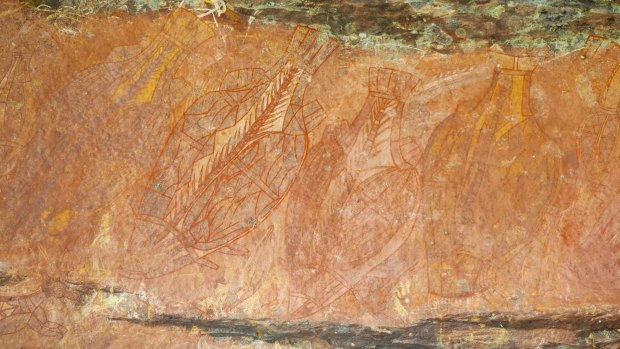
Rock art at Ubirr.Credit: Nina Karnikowski
TRIP NOTES
MORE
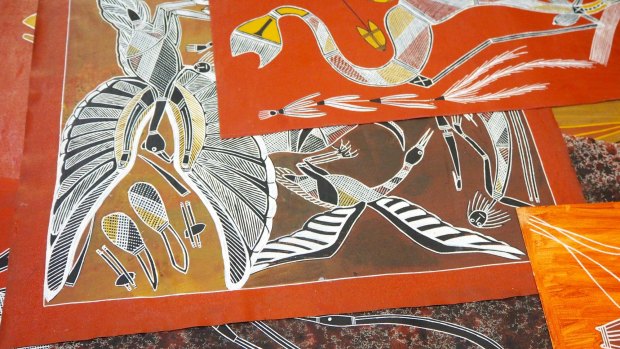
Croc Hotel ArtCredit: Nina Karnikowski
FLY
Qantas operates daily flights to Darwin from every capital city for about $700 return. See Qantas.com.
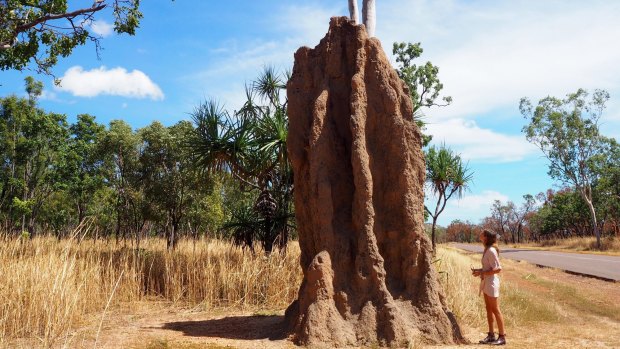
Giant termite mound in KakaduCredit: Nina Karnikowski
STAY
The 110-room indigenous-owned Mercure Kakadu Crocodile Hotel, famously shaped like a giant crocodile, is located in Jabiru, close to the main art sites including Ubirr and Nourlangie. See mercure.com/CrocodileHotel
Sign up for the Traveller Deals newsletter
Get exclusive travel deals delivered straight to your inbox. Sign up now.